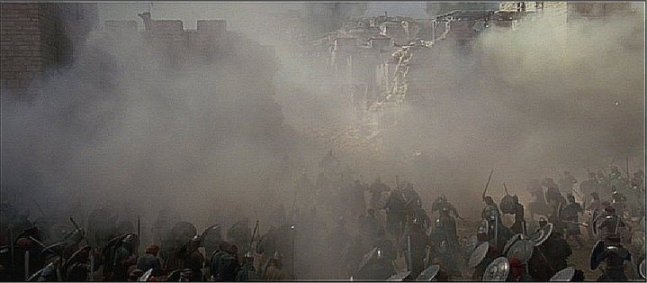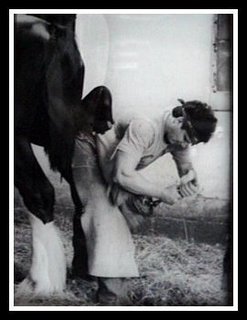Project Hero
QandO has the next Silver Star recipient tribute up on their site.
Our hero this week is MAJ Mark E. Mitchell, Distinguished Service Cross

Our hero this week is MAJ Mark E. Mitchell, Distinguished Service Cross
"It is a tremendous honor, but I don't consider myself a hero," Mitchell said. "I am not personally convinced that my actions warranted more than a pat on the back. Wearing the Special Forces foreign-service combat patch on my shoulder and serving with the finest soldiers in the world is enough. I was just doing my job and our mission was accomplished."
Mitchell's award citation states that he received the nation's second-highest military award for "extraordinary heroism in action" during the battle of Qala-I-Jangi Fortress in Mazar-e-Sharif, Afghanistan, during November 2001, while assigned to the 3rd Battalion, 5th Special Forces Group (Airborne) as a ground forces commander.
The details of how the bloody battle started are still unconfirmed. However, most reports from eyewitnesses indicate that the three-day conflict erupted when an a Taliban enemy prisoner of war drew a grenade while being searched, pulled the pin and killed himself and a Northern Alliance commander.
The suicide attack triggered the uprising and an estimated 500 Taliban prisoners being held in Qala-I-Jangi, which means "House of War," stormed two CIA agents working at the facility who were interviewing prisoners. Spann, one of ambushed agents, died at the prison and the other agent escaped.
Mitchell, 38, a Desert Storm veteran, heard of the attack when a Northern Alliance soldier rushed into a facility his unit was preparing for humanitarian workers and told him that he and his men were needed immediately at the prison.
U.S. Army Maj. Mark Mitchell, Special Forces soldier, is pinned with the second highest military decoration for valor, the Distinguished Service Cross, for combat actions in Operation Enduring Freedom, Afghanistan, by Gen. Bryan "Doug" Brown, commander, U.S. Special Operations Command, Nov. 14, at MacDill Air Force Base, Fla. U.S. Army photo by Jennifer Whittle
Mitchell organized a team of 16 British and American soldiers and sped to the prison about 25 kilometers away.
When they arrived, Mitchell led his soldiers into battle against prisoners who had armed themselves with rocket-propelled grenades, mortars, machine guns, and rifles they collected from armories at the prison. Armed with a rifle and pistol, Mitchell, wearing no body armor and head protection, climbed to the highest point of the fortress to survey the battleground.
From that vantage point, Mitchell's men began to call in air strikes on the Taliban. Later that evening, Mitchell and his men withdrew from the prison to plan the next day's operations.
The following morning, Mitchell's men returned to the fortress and were greeted by a barrage of gunfire. Mitchell and his unit requested more air support, but misfortune struck when a bomb fell near Mitchell's team injuring nine of his soldiers.
After evacuating his injured men for most of the day, Mitchell returned to the fortress under the cover of darkness with five men and directed more air strikes on the enemy positions. By morning of the third day, most of the prisoners had been killed, and those who remained were killed when the Northern Alliance rolled into the compound with tanks. Other Taliban later killed themselves rather than surrender. John Walker Lindh, the Californian who traveled to Afghanistan to help the Taliban, was captured when the battle ended.









 BlogHop.com
BlogHop.com







0 Comments:
|Post a Comment
<< Home